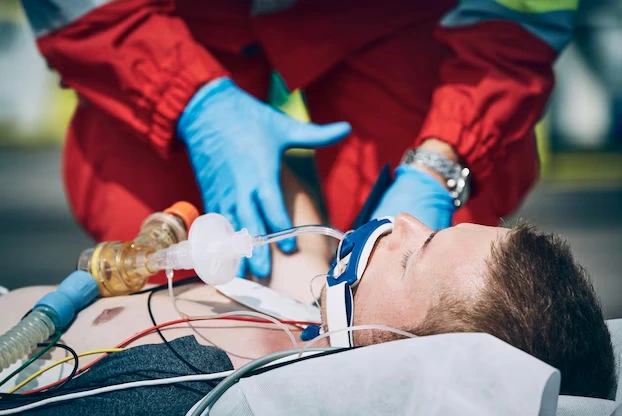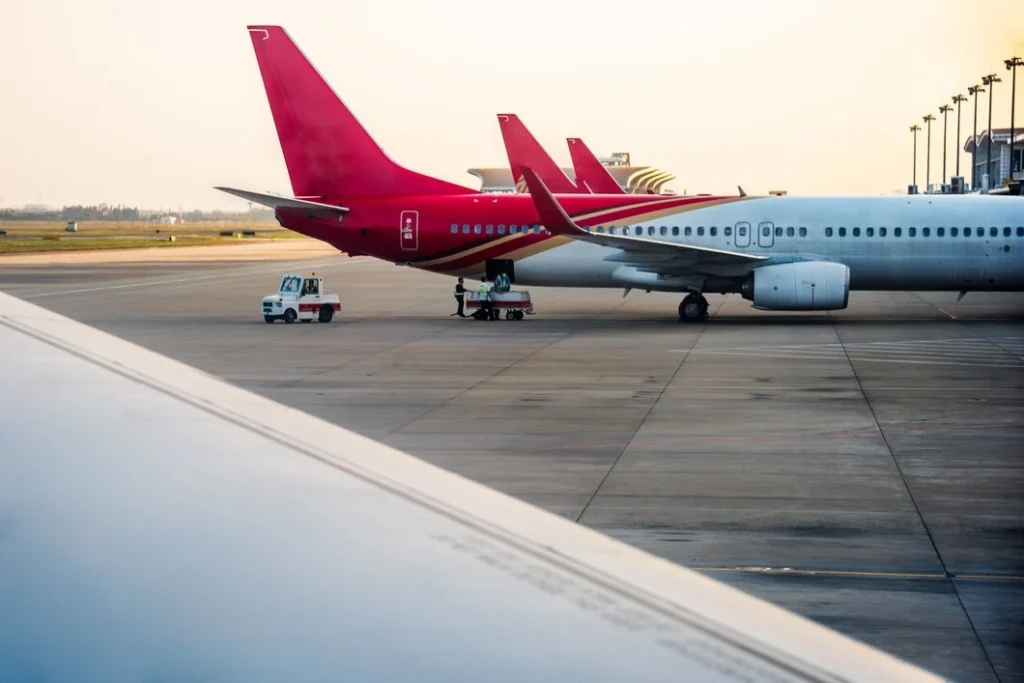(Iberia pilotbitten by tarantula)-
Passengers and crew aboard a recent Iberia flight experienced a shocking mid-air emergency when one of the pilots was bitten by a tarantula in the cockpit. The situation became even more alarming when it was discovered that the pilot was allergic to the venom, escalating what might have been a minor incident into a potentially life-threatening crisis. As the flight continued at cruising altitude, the crew had to act quickly to manage the pilot’s condition while ensuring the safety of everyone on board. The incident has sparked an investigation into how the large spider found its way onto the aircraft, raising concerns about in-flight pest control and passenger safety.

The facts of the incident
On February 21, 2025, an Iberia Airlines flight from Düsseldorf, Germany, to Madrid, Spain, encountered an unusual in-flight emergency when the pilot was bitten by a spider, suspected to be a tarantula.
The pilot, who has a known allergy to spider venom, promptly received Methylprednisolone, an anti-inflammatory medication, to prevent a severe allergic reaction.
Fortunately, he did not suffer further complications and continued his scheduled duties.
The spider is believed to have boarded the Airbus A320 during a layover in Casablanca, Morocco, on February 18.
After departing Casablanca, the aircraft made stops in cities including Brussels, Zurich, and Toulouse before the incident occurred
Upon landing in Madrid, the aircraft underwent a thorough fumigation process, resulting in a three-hour delay for its subsequent flight to Vigo, Spain.
Passengers boarding the next flight expressed concerns, inspecting their seats for any remaining pests.

The Dangers of In-Flight Animal Encounters
While commercial flights are designed to provide a controlled and secure environment, unexpected encounters with animals and insects can pose serious risks to both passengers and crew. The incident involving the Iberia pilot who was bitten mid-flight by a spider highlights the potential dangers associated with in-flight wildlife encounters. Here are some key risks:
Health Risks for Crew and Passengers
Animals and insects that find their way onto an aircraft can introduce significant health risks. In this case, the pilot was allergic to the spider’s venom, which could have resulted in a life-threatening reaction. For individuals with allergies or sensitivities, even a minor bite or sting can escalate into a severe medical emergency. This is particularly dangerous on a plane, where immediate medical assistance may be limited.
Furthermore, some species of spiders and insects can carry venom that affects the nervous system or causes tissue damage. Even passengers or crew members without known allergies can experience swelling, pain, or other adverse effects that require urgent treatment.
Disruptions to Flight Operations
A single unexpected wildlife encounter can disrupt the normal functioning of a flight. In this case, the Iberia pilot was bitten in the cockpit, a critical area where focus and quick decision-making are essential. If a crew member experiences an allergic reaction, illness, or pain, it can compromise their ability to perform their duties effectively.
In some instances, animal-related incidents have even forced emergency landings. Birds striking aircraft engines, rodents chewing through wiring, or insects interfering with essential equipment can lead to severe operational challenges. While the Iberia pilot was able to continue flying, the situation could have worsened if his reaction had been more severe.
Previous Cases of Animals on Planes
This is not the first time an animal has caused disruption on a flight. Over the years, there have been several reports of unexpected wildlife encounters, including:
- Snakes on planes: In 2016, a flight in Mexico had to make an emergency landing after a snake was spotted dangling from an overhead compartment.
- Rodents in cargo holds: Mice and rats have occasionally been found on planes, leading to concerns about potential damage to wiring and insulation.
- Bats in the cabin: In 2021, a bat flew loose inside a Spirit Airlines flight, causing panic among passengers.
While these cases may seem rare, they highlight the ongoing challenge of preventing animals from accidentally boarding planes.
Challenges in Handling Animal Encounters Mid-Air
Once a flight is airborne, handling an unexpected animal encounter becomes significantly more complicated. Unlike on the ground, where medical attention and extermination services are readily available, airline crews must rely on their training and limited resources to manage such incidents.
Medical kits on planes may include antihistamines and basic emergency medication, but they are not always equipped to treat severe allergic reactions. Additionally, it is nearly impossible to capture or contain certain animals mid-flight, increasing the likelihood of further disruptions.

Lessons and Preventative Measures for Airlines
The unusual incident involving the Iberia pilot who was bitten by a spider mid-flight underscores the need for airlines to take proactive steps in preventing similar situations. Ensuring passenger and crew safety from unexpected wildlife encounters requires a combination of enhanced screening measures, improved medical preparedness, and stricter pest control protocols. Here are some key lessons and preventative measures airlines can implement:
1. Strengthening Pest Control and Aircraft Inspections
One of the biggest concerns raised by this incident is how the spider made its way onto the aircraft. Airlines must reinforce pest control measures, especially in regions where insects, arachnids, and other small animals are more prevalent. Some key actions include:
- Regular aircraft fumigation to eliminate potential infestations before takeoff.
- Thorough inspections of cargo holds, passenger cabins, and cockpits for any signs of pests.
- Sealed cargo and baggage containment to prevent unwanted creatures from boarding the aircraft.
Airlines should also work closely with airport authorities to ensure that proper pest management procedures are in place in areas where planes are parked, loaded, and serviced.
2. Enhancing Medical Preparedness for In-Flight Emergencies
Medical emergencies at 30,000 feet can quickly escalate without proper intervention. The fact that the Iberia pilot was allergic to the spider’s venom highlights the importance of onboard medical preparedness. Airlines should:
- Ensure that all medical kits are stocked with essential emergency medications, including antihistamines, epinephrine (EpiPens), and anti-inflammatory drugs for allergic reactions.
- Train cabin crew members in basic first aid and allergy response protocols, ensuring they can recognize symptoms and administer necessary treatments.
- Consider telemedicine consultations, where onboard emergencies can be assessed by ground-based medical professionals via communication systems.
Improving medical preparedness can make the difference between a manageable situation and a severe in-flight emergency requiring diversion or an emergency landing.
3. Improving Cargo and Luggage Screening
Many in-flight animal encounters occur due to creatures hitching a ride inside luggage, cargo, or aircraft storage compartments. Airlines should:
- Implement advanced scanning and monitoring technology to detect unwanted wildlife in checked baggage and cargo shipments.
- Educate passengers and cargo handlers about potential biosecurity risks and proper packing procedures.
- Introduce stricter policies for transporting live animals, ensuring they are contained and pose no threat to others onboard.
By addressing these issues at the ground level, airlines can prevent unexpected encounters with spiders, insects, and other pests in flight.
4. Developing Emergency Protocols for Animal-Related Incidents
While medical emergencies and technical failures are extensively planned for, encounters with wildlife inside an aircraft remain an under-addressed risk. Airlines should establish:
- Clear protocols for handling wildlife encounters mid-flight, including containment procedures and safe removal upon landing.
- Guidelines for pilots and cabin crew on how to respond to unexpected animal intrusions while maintaining passenger safety.
- Emergency diversion strategies for severe cases where an allergic reaction or other complication arises.
Having structured plans in place ensures that the crew can act quickly and efficiently to mitigate risks.

Conclusion
The shocking mid-flight incident involving the Iberia pilot who was bitten by a spider has raised important questions about airline safety, pest control, and emergency response preparedness. While it is highly unusual for a spider—especially a potentially venomous one—to find its way into the cockpit of a commercial aircraft, this event demonstrates that even the most unexpected threats can arise during air travel. The situation became even more concerning due to the pilot’s allergic reaction, which could have led to a life-threatening medical emergency if not managed quickly and effectively by the crew.
This incident highlights the need for airlines to implement more rigorous pest control and inspection measures, particularly in regions where spiders, insects, and other small animals are more likely to enter an aircraft undetected. Thorough inspections of cargo holds, passenger cabins, and crew areas should become a standard procedure, ensuring that unwanted wildlife does not board a flight. In addition, stricter screening of baggage and cargo can help prevent accidental transport of insects or other creatures that might pose risks to both passengers and flight operations.
Beyond pest control, the event underscores the importance of comprehensive medical preparedness onboard flights. Had the pilot experienced a more severe allergic reaction, the crew’s ability to manage the situation could have been severely tested. This highlights the necessity for airlines to ensure that all flights are equipped with essential medical supplies, including antihistamines, epinephrine injectors (EpiPens), and other emergency medications. Moreover, crew members must receive ongoing training in handling medical emergencies, including allergic reactions, to provide immediate care when needed.
Animal-related incidents during flights are rare but not unheard of. There have been past cases of rodents, snakes, and even birds disrupting flights, causing anything from minor inconveniences to major safety concerns. These occurrences reinforce the need for airlines to establish clear emergency protocols for dealing with unexpected wildlife encounters. A structured response plan can help cabin crew and pilots react swiftly and efficiently, minimizing risks to flight operations and ensuring passenger safety.
Ultimately, the Iberia spider bite incident serves as a valuable lesson for the aviation industry. It reminds airlines, regulators, and passengers alike that even the most well-controlled environments—such as a commercial aircraft—are not entirely immune to unpredictable situations. Moving forward, airlines must strengthen pest control measures, enhance medical readiness, and refine emergency response strategies to mitigate similar risks in the future.
While the pilot in this case was fortunate to have received timely medical attention and continued his flight without further complications, the event could have ended much differently. This serves as a call to action for airlines worldwide to reassess their safety and prevention protocols, ensuring that they are fully prepared for any unexpected challenges at 30,000 feet.
Table of Contents
thank you for reading also: Don’t Forget! Daylight Saving Time: Clocks Spring 1 One Hour Forward Tonight – trendsfocus
Pilot with allergy to spiders is bitten mid-flight by a tarantula (nypost.com)
1 thought on “Iberia pilot bitten by tarantula in flight was allergic”
Comments are closed.